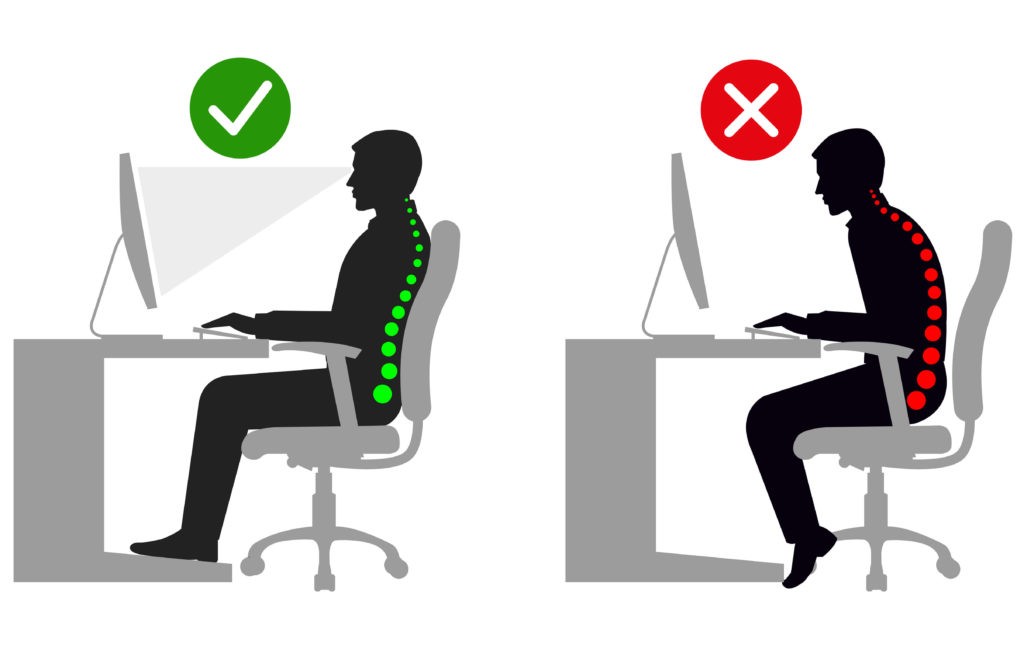Ergonomics involves the use and design of things we use on a regular basis that help us avoid unnecessary strain on joints. There are plenty of things you do and use that are not ergonomic, leading to suffering from poor joint health. However, knowledge is power, and when you know what the major ergonomic risk factors are and how to avoid them, you can ensure you have excellent joint health.

According to OSHA, around $1 out of every $3 spent by companies on workers’ compensation was done on ergonomic-related issues. The University of California at San Diego has identified 14 ergonomic risk factors that are commonly encountered when someone is at work or at home. These risk factors include the following:
- Sitting or standing in awkward positions
- Bending to the point of causing undue strain on joints
- Compressing body parts or creating contact stress
- Forcefully exerting your strength
- Not taking enough, or long enough, rest breaks
- Heavy lifting
- Poor lighting
- Too much noise
- Pushing or pulling needlessly
- Overreaching for something
- Doing a repetitive motion
- Holding and sustaining postures for too long
- Experiencing extremes in temperature
- Experiencing too much vibration
Ergonomic Changes to Make at Work and at Home
If you want to avoid the risk factors listed above, there are a few changes you should make, both at work and at home.
Here are our ergonomic changes for better joint health:
At Work
Sitting at a desk all day, which is what many people working do, for hours on end, is a recipe for aching backs and wrists at the very least. By taking ergonomics into consideration, you will reduce the pressure and strain on your joints.
If you are sitting for most of the day while you are working, make sure your body is directly in the front and center of your desk. You should also make sure that your desk and chair allow you to sit with your feet flat on the floor. Also, you will want to pay attention to the height of your desk or work area. Keep it around an inch lower than the place where your elbow naturally falls. Finally, keep your screen at eye level or close to it, if you can.

If you are standing for most of the day while working, make sure your shoes give you the proper arch support you need. You may also want to invest in an ergonomic floormat that makes the floor a bit more comfortable to stand on. If you have footrests available, then you have the ability to shift your body weight a little bit and take some strain off of your back.
While standing, make sure that you have any surfaces at the ideal height for the kind of work that you do. For example, if you are involved with precision assembly, then make sure it is positioned around 2″ above your elbows. If you work on an assembly line, then this should change to 2″-4″ below your elbows. Any sort of heavy work where you place a lot of downward force should be anywhere from 8″-16″ below your elbows.
Whether you sit or stand while working, you should shift your position every half-hour to avoid tensing up your muscles.
In the Kitchen
Transforming your kitchen into an ergonomic space will help you maintain good joint health and avoid sprains and strains. One easy change you can make is finding the optimal locations for your utensils, dishes, and cookware, especially the ones you use regularly. Avoid needing to stretch or bend unnaturally to get them. Anything that doesn’t get used regularly should be stowed away.
You can also install non-slip and padded floormats by your sink, stove, and other prep areas. These simple and affordable additions to your kitchen will help reduce how tired your legs feel while you are in the kitchen. Finally, all of your heavy and bulky items, including flour, potatoes, and heavy pans, should be stored somewhere that is easily accessible without much lifting being done.
In the Car
One other area you probably spend a great deal of sedentary and stationary time is your car. You should keep ergonomics in mind while driving as well. You probably know all too well how painful it can get after driving for a long time, especially in your lower back, hips, and knees. There are, thankfully, a few adjustments you can make for a more enjoyable and pain-free drive.
The first thing you will want to do is adjust your seat. Do so in a way so that it feels comfortable for your body. Pay special attention to how your back and knees feel while in a seated position. Take notice of any other problem areas that are causing you pain. You may be too far or too close to the steering wheel, or have your seat reclined too much or not enough.
Take a Joint Supplement
Finally, pair up a joint supplement with all of the ergonomic changes you will make. By taking a potent and natural joint supplement like JointFuel360, you support healthy joints. In JointFuel360, you get powerful anti-inflammatory compounds like black pepper extract and turmeric, antioxidants like resveratrol, ingredients like boswellia serrata that reduce swelling in the joints, and many other helpful compounds. Living and working more ergonomically is a great step to take, but you should also be delivering the nutrients your joints need to stay healthy.
Wrapping Up
When you keep ergonomics in mind, you ensure your joint health by avoiding stressing, straining, and overusing your joints. When you are standing, sitting, or doing something in awkward positions, you are risking causing joint pain. Now that you know what kind of ergonomic changes you can make at work and at home, you can avoid suffering needless aches and pains and enjoy a more pain-free life.
